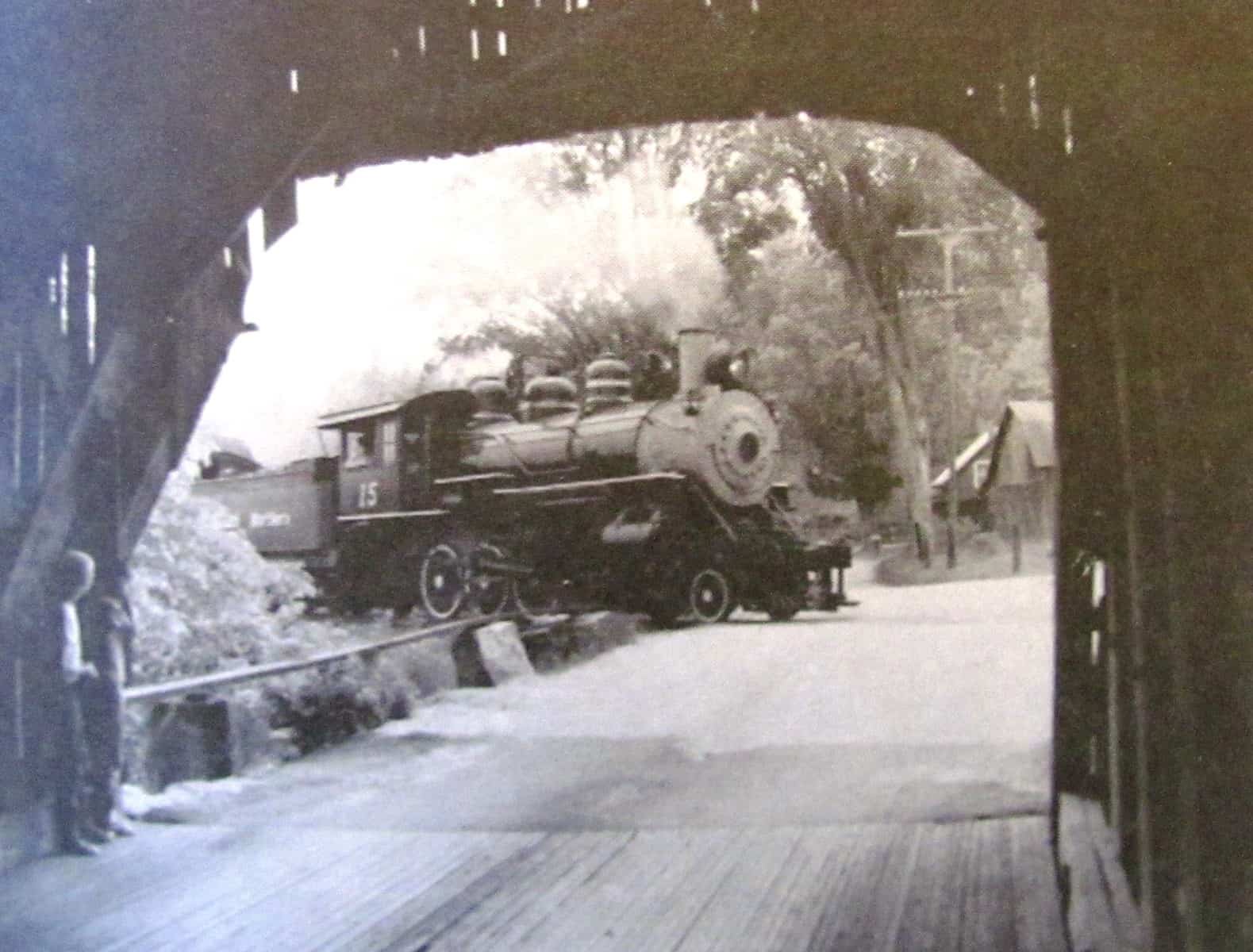
Below is a story by Lee Kendall. Henry can relate. It takes place in 1964 when the Kendalls were living in Bartonsville:
All the big kids in town spent a lot of time hanging around the covered bridge. The bridge is about half a football field long with a wonderful swimming hole beneath.
Rainy days we’d hang out in the bridge, climb into the roof rafters, carve our names and other stuff into the big old, rough beams, or just watch the water flow. Hot summer days we’d swim or fish. The bridge was a neat place to keep out of the hot sun.
In 1964, Steamtown started giving scenic train rides from Bellows Falls to Chester. The train always stopped at the covered bridge so passengers could take photographs. There were two trips a day. It didn’t take long for us to learn the schedule.
The train always pulled a little bit past the bridge before stopping so as not to block traffic. There was a gravel parking lot, with plenty of room for passengers to get off and cars to park.
One fine summer day we were at the bridge. We heard the train blow its whistle for a crossing a mile and a half south of us. At that time Steamtown was using an old steam locomotive to give a more historic feel. As the train got closer we could see the smoke and hear those big steam pistons chugging.
Somebody suggested we put some pennies on the track to see how flat they would get when the train ran over them. We were amazed. After the engine and six or eight cars went over the coins, they were just pieces of thin shiny copper.
The train continued to Chester. By the time it returned we had gone home for more change and were back at the bridge waiting. This time we had pennies, nickels, dimes, and even quarters. The train returned right on schedule, and as it huffed out of sight we gathered up our large, shiny, flat treasures.
It was a couple of hours or more between trips so we went home for lunch but were back at the bridge for the afternoon train. We heard the whistle blow and started putting more coins on the track.
My cousin, whose name I won’t mention so as to protect the guilty, picked up an iron nut about an inch square. It was one of the nuts used to connect sections of rail.
“I wonder how big this nut will get?” he said, holding it up so I could get a good look.
“I don’t think you should put that on the track,” I said. “It’s iron. It’s too hard.”
“What do you mean,” he replied. “That locomotive weighs 200 tons. This nut will be a foot long after it gets run over.”
“I wouldn’t do it,” I said as he lined it up on the track with coins.
The train came chugging up to the bridge where we stood watching. When the engine hit that nut it appeared to jump six inches into the air. As each successive wheel hit the nut you could see that big iron machine shake and rattle.
Before the train stopped moving we knew it was time for us to leave. We ran half way up the mountain behind the village to an old cow pasture where we could look down on the bridge, the train, and all the houses.
The engineer and a couple of other railroad guys got off the train and spent a lot of time looking under the wheels and picking stuff up.
Soon three state police cars arrived, and then a couple of unmarked cars with serious looking detective types who took a lot of pictures.
Eventually the train proceeded on to Chester. The police and detectives drove up through the village, stopping at every house. They spent all afternoon talking to whoever was home.
My parents were both at work so they weren’t available for questioning. We stayed up on the mountain and watched the police cars finally leave. We saw my parents’ cars come home and still we waited until almost dark to come down.
We came into the house hot, tired, thirsty, and sweaty. My Dad looked us over a good long look and finally asked, “Were you boys down at the bridge this afternoon?”
“No,” I said. “We’ve been up on the mountain all day exploring.”
This week’s old saying is Nelson Kendall’s epitaph: “I’m pretty well caught up.”